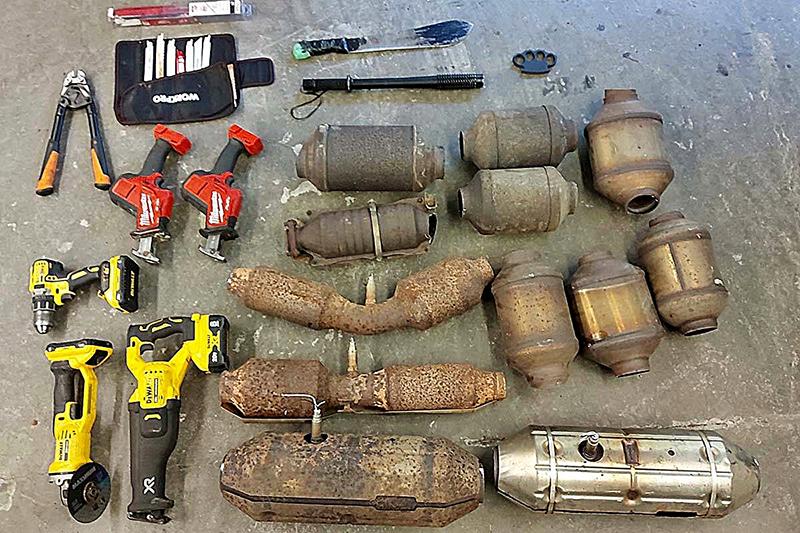Difficult days as thieves target valuable metals
Cat thefts have hit the headlines in New Zealand. Not the furry night-marauders though, these are the expensive sort sitting under our vehicles.
Private motorists who park their cars in places where they are accessible are waking up to find their exhaust systems chopped open, cat heat sensor wires stripped away and the catalytic converter itself gone. Worse, in some cases modern cars and 4WDs have two or even three cats.
The motivation: cats are worth money at scrap dealers. Their rare metals – palladium, rhodium, and platinum – can be extracted and re-used. Replacement costs spiral upward of $2000 per cat very quickly.
In Auckland in June, thieves were hitting second-hand car yards, taking ten or more cats at a time. Even though a second-hand cat fetches less, that theft represents a massive cost to the company, especially if their insurance refuses to cover the loss.
So far in New Zealand this trend is city and town-based, but rural communities may well be next.
It is a trend imported from overseas, and it is on the rise here. Thefts of catalytic converters continue to climb at an alarming rate, and the pandemic and its resulting economic issues pushed up the value of metals like cadmium by a huge amount.
Catalytic converters are generally easy to access; it takes an average of three minutes for a thief to slide under a car (less for a 4WD because of the additional ride height) and simply cut it out with a hacksaw or Sawzall. It’s a pretty lucrative crime of convenience.
Hybrid vehicles are particularly vulnerable, because their cats use even more precious metals.
So, what are the best ways to avoid becoming a cat theft statistic?
Aside from typical anti-theft best practices like parking in well-lit areas and setting the car alarm to its most sensitive option, there are a few measures owners can take.
Fitting a metal ‘cat shield’ under the vehicle can slow down the theft or convince the thief to look for easier prey. Just remember a cat works by creating heat to activate the metal coatings that atomise pollutants.
Insurance doesn’t really help – wait to get paid out, argue about value, convince the company a replacement used cat is not acceptable? No thanks. Not all insurance policies will even cover cat theft—and because it’s a model-specific emissions device, cat replacement can cost thousands from a dealer.
Fit an anti-theft device? There are not many on the market here yet.
It’s one of those awkward modern issues. Nobody should have to take measures to protect parts of their car from this kind of attack, and yet it’s the owner that ends up with the inconvenience and expense when they are hit by cat theft.







